Review: Nokia E75 - Long Term Review
The Nokia E75 has been slowly but surely working its way into the hearts and minds of the All About Symbian team during 2009. Here's my long term review - what has been outstanding and what has been a problem?
Launched, somewhat comically (fast forward to the bit where the E75 gets announced, my vote for spoken gaffe of the year!), at MWC 2009, the Nokia E75 was pitched as a replacement for the likes of the Nokia 9300, itself not actually branded as a 'Communicator', making the claim valid, though there are still significant screen size benefits to the E90, which is perhaps best thought of as the successor to the 9500. The E75 certainly doesn't replace the E90 per-se, there is room for both in Nokia's line-up, although the software here is much more up to date in terms of OS and applications. It's debatable whether the E90 will be updated again, leaving it as the 'end of the line' for the 'classic' Communicator, for many. Can the Nokia E75 step into the breach?
Well, yes and no. You didn't think I could answer in one word, did you?(!) Before going any further with this feature, I strongly suggest you remind yourself of our previous Nokia E75 coverage here on All About Symbian, since my observations below aren't intended to include all the specifications and finer detail of the main reviews:
Nokia E75 - Part 1: General Design and Hardware (by Rafe)
Nokia E75 - Part 2: Camera and Multimedia (by me, Steve)
Nokia E75 - Part 3: The Consumer's Viewpoint (by Ewan)
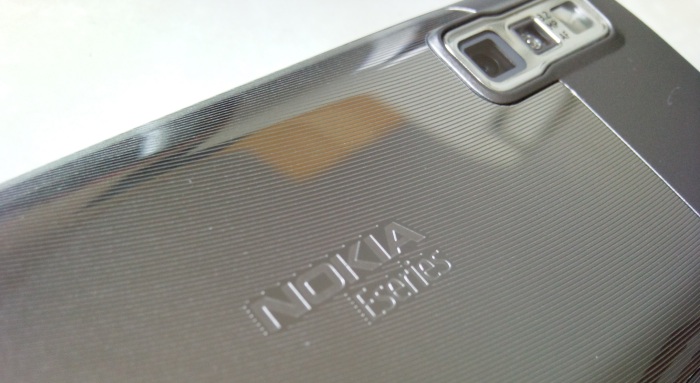
It has been unusual to have a single device covered by all three of us, hinting at the 'everyman' appeal of the E75. Ewan was first, being presented with a loan prototype to help him around the USA in March - his verdict can be summarised as 'does everything better than average'. Rafe was next, proclaiming 'With a Janus form factor and mature software offering, the E75 is an excellent all rounder.' Significantly, Rafe liked the device so much that he went out and bought one for real. I was then lent one for a couple of months by Nokia PR and gave my generally positive impressions of the E75's camera and multimedia package.
As a view of Phones Show 80 will bear out, my initial overall impressions of the E75 were tempered by caution over the degree of miniaturisation - I proclaimed everything too cluttered. However, as time went on, I found myself drawn back time and time again to the E75 because it has, quite simply the best QWERTY keyboard of anything else of comparable size. In fact, the positive of the keyboard has been enough to outweigh the smallish (2.4") screen, the so-so front keypad and the aforementioned 'cluttered' feel, and I made the decision to use the E75 full time in preference to the theoretically higher-end Samsung i8910 HD and the Nokia N86 and N97, all of which were also available to me.
Reckless decision? And how did I get on? And, on my recent week's holiday, on which the E75 was my only electronic lifeline to the world, how did I get on going 'really mobile'? (phrase © these guys)
- Let's get the biggie out the way first. I didn't miss 'touch'. At ALL. For all their sexiness, the Samsung i8910 HD, N97 and 5800 XpressMusic are currently beaten for real world, raw usefulness by non-touch devices, principally the E75, the N96 and the N86, from Nokia's current portfolio. Using a phone's functions one-handed is just so natural for me (qwerty input apart) that switching back to a (principally) 'two-handed' touch device felt, somehow, clumsy.
In addition, and perhaps crucially, I tend to use my smartphone in the dark a lot, in addition to the aforementioned one-handed use (and no, stop those lewd thoughts, it's just your imagination etc), principally to listen to music and podcasts while going to sleep, or early in the morning. Trying to control a touch-screen phone (especially the incredibly sensitive capacitive screen on the i8910 HD!) in the dark while lying down is just about impossible, while manipulating the d-pad on a button-driven phone 'unsighted' is a breeze. So no, Touch isn't always better than Buttons... 8-)
- The overall size of the E75 is a boon, especially when I was away on holiday and mobile all the time. Consider that a year or so ago I was toting the E90 for similar duties and then look (below) at the size difference - it's quite staggering how much miniaturisation has gone into the E75 - while making the qwerty keyboard bigger and arguably easier to use.
- Staying with the qwerty keyboard, having such a great input mechanism eliminates text-entry-fear. In other words, fear of those occasions where you've had a standard numeric keypad or even a touch-based qwerty layout and have needed to input a load of non-trivial text, with punctuation, real names, codes and URLs. With a full qwerty keyboard, you just slide it open and start typing. No need to wrestle with predictive software or fussy non-multi-touch software keyboards. On the E75, I was getting up to 40 words per minute at times, which I was more than happy with.
- Although the 3 megapixel camera is one of Nokia's better units (better than the E90's and almost as good as the N93's), the lack of supporting software in the E75 was a disappointment. For example, wanting to edit a photo to adjust brightness, or wanting to downsample a 1MB photo for sending up to Twitpic via slow GPRS (hey, I was right out in the country while on holiday - no 3G in sight!) In each case, I was stumped. I'd like to see Nokia add in some of the basic image editing functions that are found in almost every other S60 phone, it seems. Definitely a weak point of the E75.
- Having switched back to the E75 after a spell with the N97, the N86, the 5800 XpressMusic and the i8910 HD, it was a real wrench having to go back to applying keylock using the old 'left function key and star' shortcut - the new keylock toggle switches are a vast, vast improvement and it's sorely missed on the E75.
- One area I was worried about, in moving from my beloved N82 and N95 (and, topically, from the Samsung i8910 HD), was poor multimedia performance. With no dedicated video or graphics hardware, I was expecting juddery video and sluggish games. Although the E75 isn't going to out-perform any of the devices just mentioned - it doesn't even come close, let's be fair, none of Nokia's recent devices do - I found video playback surprisingly watchable and I found that games were smoother on the E75 than on older (S60 3rd Edition) Feature Pack 1, non-graphics-accelerated phones. So, for example, the games MicroPool and Virtual Pool Mobile both ran acceptably smoothly, even though the animation was all having to be rendered in software. Nokia obviously felt confident here too, by way of including the N-Gage client in the E75's firmware - I've been running Pro Series Golf quite happily.
It's fair to say that there are occasional glitches, particularly when playing back some video formats, or when running the third party Google YouTube client, but the problems are marginal and it's worth noting that the E75 is still on relatively early firmware, v110 as I write this - I'm fully expecting a 10% performance boost from the next version (v220?)...
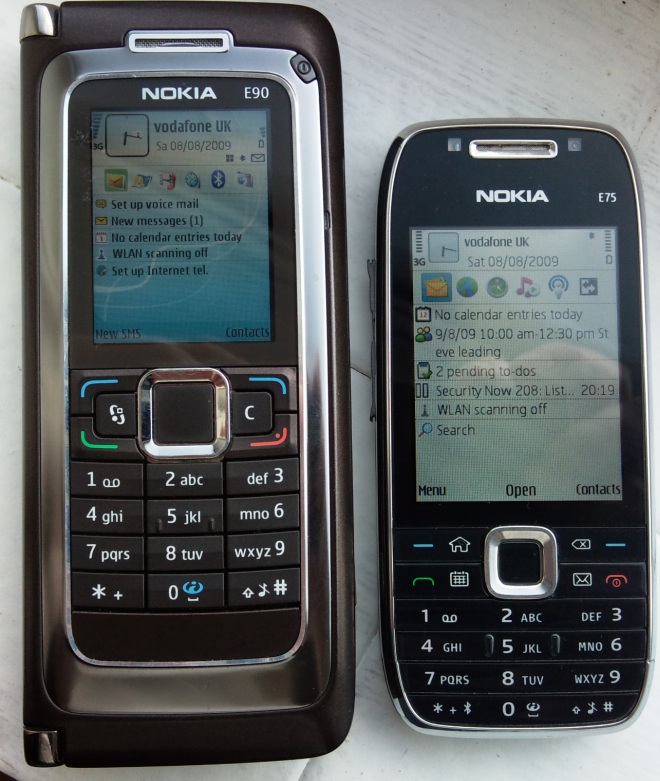
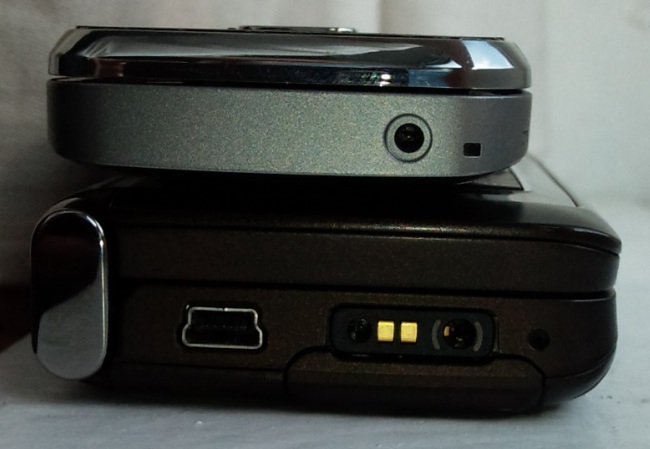
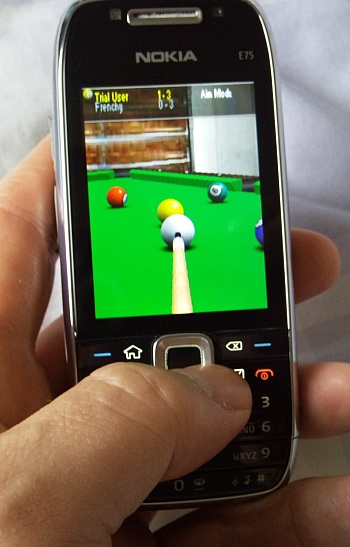
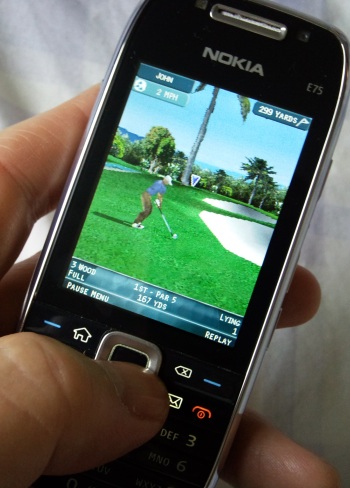
- Talking of firmware, Ovi Maps 3 isn't built in - I had to apply the standalone (Windows-based) installer in order to get the E75's Maps up to the latest version. Although generally a fan of Nokia/Ovi Maps' interface, I still have reservations of the completeness of the data sets used. On three occasions during my holiday, the software tried to route me crazily. In one case, sending me on a 30 minute nightmare along one-track country roads where a 10 minute blast down a dual carriageway would have been FAR better; in another instance, trying to send me back down the same motorway I had just come, intending me to then leave at the next exit, turn round and then come back UP the motorway again, adding 15 minutes to my journey; and finally losing the plot altogether on a dead straight road, insisting on 'Route recalculation' every so often. My gut feeling is that these glitches are all related to imperfect map data, with tiny 'gaps' where roads should be joined. Fall foul of a gap and your route can get very convoluted.
In addition, searching for 'things' was far less successful than when doing the identical searches in Google Maps. To be fair to the E75, of course, this rant isn't aimed at the device, although I'd hope Nokia would have ironed some of this out when thinking about a version of Maps for the next firmware!
- The much vaunted Eseries FP2 improvements haven't impressed me much, I'm afraid. The predictive text in qwerty mode gets in the way more than it helps, the new-styled Calendar is quite a bit slower than its predecessor and the home screen 'mode switching' is too much, even for me. I always seem to forget to switch modes and end up in the wrong one, with the wrong apps. I've ended up putting the same apps on each ('home' and 'work') but have one set to a white theme and one set to a dark theme, giving me a very fast way of switching themes. All a bit of a sledgehammer to crack a nut though, if I'm honest.
- I've been very impressed indeed with the audio produced by the Nokia E75. Its rear speaker isn't quite as loud as the stereo units on the N95, naturally, but it's quite good enough for me to listen to podcasts while doing chores around the house. Using decent 3.5mm headphones, the sound quality for music is tremendous - I found that the in ear Nokia HS-83 headset (shipped with my N86) worked beautifully - annoyingly, my review E75 was missing its headset, so I can't comment on the quality of the stereo headset normally provided (HS-43).
Intriguingly, my Ultimate Ears headphones sounded very tinny with the E75 (and with some other Nokia handsets) - the best rule of thumb is not to mix manufacturers when it comes to accessories - matching impedances (etc) is critical when it comes to audio, for example.
- The awkwardness of the d-pad and function keys when the E75 is in 'opened' mode, something I'd been wary of, turned out to rarely be a problem. Most applications worked better in portrait mode, with the d-pad and fn keys to hand, then when text input was needed, I simply opened the keyboard, typed in the text with the screen automatically now in landscape form and (usually) then closed the keyboard again, resuming exactly where I needed to.
In other words, don't think of the E75 as a Communicator, used all the time in open/landscape mode. Instead, think of it as a traditional S60 3rd FP2 smartphone that happens to have a sumptuously large qwerty keyboard concealed and ready for action when needed.
- Much comment has been passed on the silver bar that divides the keyboard in half. This isn't just Nokia being peverse, the bar is structural and helps to keep the E75 feeling as solid as it does when in closed mode. In use, you quickly get used to its presence and the bar isn't a problem at all.
- Also slightly oddly positioned is the camera shutter key, positioned more centrally than is conventional, but you soon get used to this. Most importantly, and like the volume keys, the shutter button is of very high quality. After the disappointing shutter buttons on (for example) the E90, the N96 and the N86, the E75's is super to use, on a par with that in the likes of the N95.
- Staying on the theme of buttons, the E75 has, like many other Eseries phones, 'one-touch' keys, essentially just application shortcuts. There are only two buttons on this device but I love the way a long keypress can also be assigned to an application. Effectively, you end up with four application buttons - I keep these assigned to Calendar and Messaging (the defaults for short presses) and Music player and Contacts, but any of these can be altered, so long as you can remember what you re-assigned them to!
- I said in my first reviews of the E75, and I stand by my words, that Nokia could have fitted in a 2.6" screen here. Yes, the miniaturisation is already impressive, but a slightly larger screen would have been the icing on the cake. That 0.2" might not sound much but it's very noticeable in use - the 2.4" display is the single biggest weak point of the E75. It's OK for general phone use and, surprisingly, fine for Word file editing and email, but you're looking at frustration when browsing the web and eye strain when trying to view photos or videos. Cynics will point out that I'm never satisfied - and they'd be right!
- Another potential weak point of the device is its 1000mAh battery, with the size constrained by the E75's form factor - the traditional Eseries 1500mAh BP-4L would have been just a tiny bit too wide. Yes, I noticed the difference, coming from the E90 and from the 1350mAh-batteried 5800 and BP-4L-ed N97, but the reduced capacity was never a problem in real life. The salient point is that the E75 has a very different use case scenario from devices like the 5800 and N97 (or to the N95/N96). You're not going to be playing movies for long (the screen's too small), for example. And you're not going to be shooting long videos (the quality's not as good as that from the N86 or N95/N96 and not good enough for semi-pro use). Add in that S60 3rd Edition Feature Pack 2 is more battery frugal than previous versions and you end up with an E75 that easily gets through a day of heavy PIM/phone/email/music use without running dry.
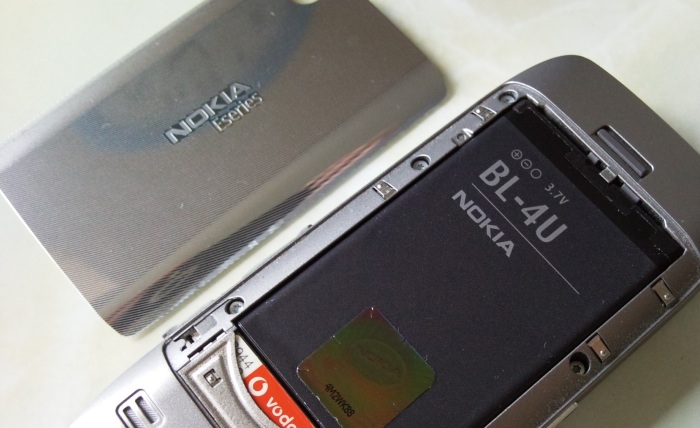
- As mentioned briefly above, the current v110 firmware is still fairly early, for Nokia. It's a lot more stable than equivalent firmware in some Nseries phones I could mention, thankfully, but there are a few rough edges that absolutely have to be addressed. Chief amongst these is Calendar: this runs as if dunked in treacle sometimes and asking for a new entry results in a four or five second wait. Only a minor irritation in the scope of the E75, but if you use Calendar a lot then the irritation grows! Roll on v220!
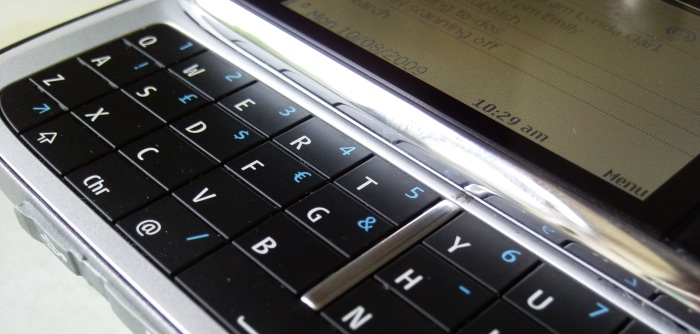

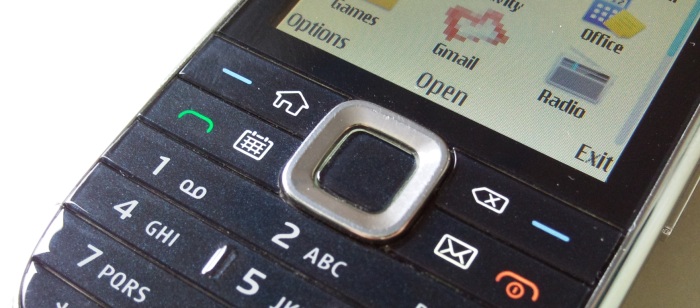
Now that the Nokia E75 has been on sale for a few months, it's being heavily discounted around the Web - I found it for around £280 inc VAT (£243 ex VAT), SIM-free, without even trying. At this price it's something of a bargain, in terms of what you get for your money. The form factor of side-sliding qwerty has become popular on most mobile platforms in the last couple of years (pioneered by HTC on Windows Mobile, of course) and I'd maintain that the E75 is one of the best examples currently available. Certainly in terms of functionality, build quality and overall 'closed' form factor.
Perhaps the ultimate compromise smartphone, the Nokia E75 isn't really the best at anything. And as such, it's never going to be classed as a flagship. But as we keeping saying on All About Symbian, it's turning into one hell of an all-rounder. It can handle Office editing and email almost as well as the huge E90, it can take photos almost as well as the N95 (albeit at slightly reduced resolution), it can play music as well as the 5800, and so on. And, perhaps most importantly, it does all this in a form factor that's relatively robust and which doesn't scream 'fragile', 'chunky' or 'nickable'!
Steve Litchfield, All About Symbian, 10th August 2009
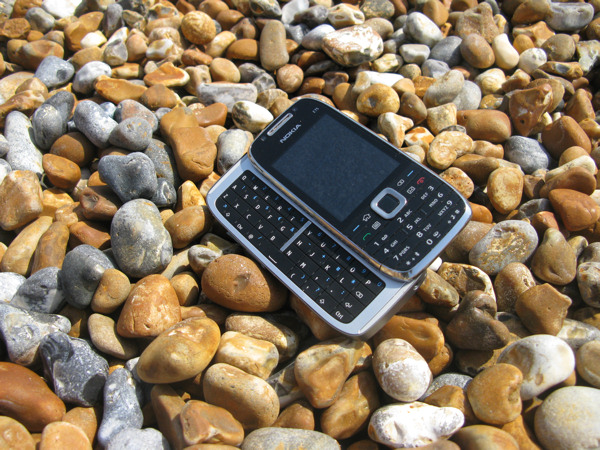
Reviewed by Steve Litchfield at
